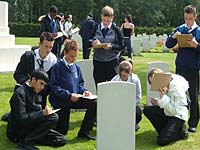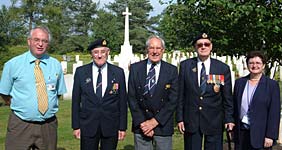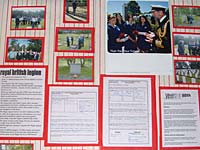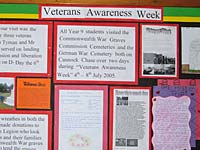
Home Page Project ListingsProject OverviewBackground / ContextLearning ResourcesUseful Links |
Codsall Community High School - History & Citizenship ProjectVeterans Awareness Week Veterans: Their Past, Your Future School/Beneficiary DetailsCodsall Community High School is a 13-18 co-educational comprehensive located in the attractive village environment of Codsall in South Staffordshire. We have 1300 students on roll, of whom 300+ are in the Sixth Form. In September 2004 the school was the first in Staffordshire to achieve Specialist College Status in Maths and Computing. We are a community in which all are valued equally and are encouraged to express their views and to participate in the development of the school.
All Year 9 students were involved in the ‘Veterans: Their Past, Your Future’ project, that is 332 students. Also, 8 Sixth Form History ‘A’ Level students were involved in assisting the Veterans. The main subjects and staff that were the driving force behind the project were History (Mr P Hallett) & Citizenship (Mrs B S Jones). Although the whole school community benefited as a result of the display work produced by the students, which caused many to stop and think about the human consequences of war.
Aims & ObjectivesAims
Objectives
Project Activities The biggest challenge was to offer a comparable educational experience to all 332 students in year 9. This was done by providing a main focus to this project in the format of a trip to the Commonwealth War Graves Commission: British and German Military Cemeteries at Cannock Chase. Although one group also went to the Katyn memorial stone which commemorates those members of the Polish Army murdered in the Katyn forest, this was done because their form tutor, Mr S Glinka, also their History teachers is of Polish decent and with his own father being a Polish paratrooper dropping at Arnhem in 1944. The net effect was to broaden further the clear impression that all nations are victims of war not just our own. Preparation for the TripIn Citizenship lessons, to prepare for the trip to the Commonwealth War Graves Commission: British and German Military Cemeteries at Cannock Chase and listening to the veterans, the students had to use ICT and look at websites relating to Veterans Awareness Week, the Royal British Legion for research in order to complete the following work:
The TripEach student visited both cemeteries, spending approximately 35-45 minutes in each, they:
Follow-up work from the Trip – Producing Display Work
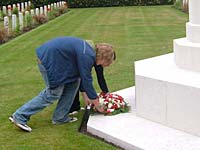 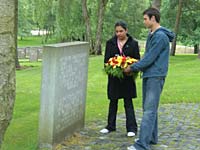 Laying of wreaths at the British & German cemetaries OutcomesThe event was successful; all three veterans attended both days and talked to twelve groups of Year 9 students over the two mornings with regular breaks, drinks and snacks to keep them going. The sixth form helpers, who had some experience of war cemeteries, having already taken part in a pilgrimage to Ypres and the Somme only four months previously, were fantastic and led the wreath laying ceremonies on behalf of the students and staff of Codsall Community High School.
The students listened in awe to the veterans and asked many sensible and thought provoking questions about how the veterans felt when at war and now. They began to understand what the veterans went through and how they felt to be eating with friends one minute, then under attack the next, then clearing up afterwards to find the some of the friends they were eating with now dead. Some students started to share with the group and the veterans the stories they had heard from there grandfathers, which was very informative. They were also shocked at the ages of some of the soldiers buried and could relate to what someone of a similar age would be doing today, for example, going to their Year 11 Prom! They were also shocked at more than one person sharing a grave as was seen in the German cemetery. The students thought that the Commonwealth War Graves Commission kept the cemeteries beautifully and found them peaceful places, although very sad. They were also surprised to see visitors from other countries in the cemeteries and even informed a German couple of how to get to the German cemetery. The couple were delighted with this news as they did not know that there was a German cemetery at the site. After this couple had visited the German cemetery they took the time to speak to students and ourselves and commented on what a wonderful trip we were doing to inform our students of the past, as that was one way, hopeful of ensuring the future does not hold a similar event. They also thanked us for laying the wreath in the German cemetery. In fact a number of visitors talked to the students about the work they were doing and expressed how valuable the work was, this made the students feel they were doing something worthwhile. We used the digital camera to record the events on both days. The students work, including pictures from the day and the posters provided by the Lottery funding was then displayed in the main body of the school.
|
